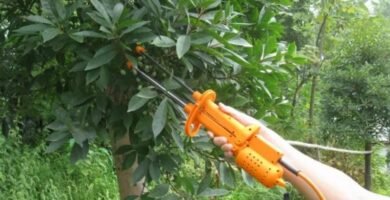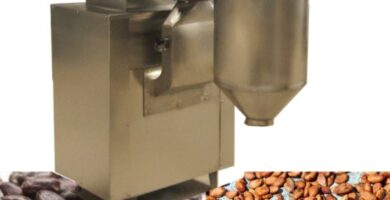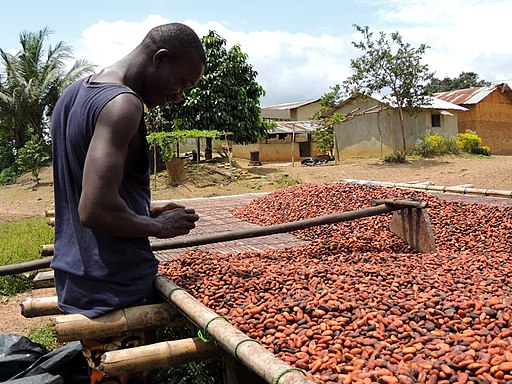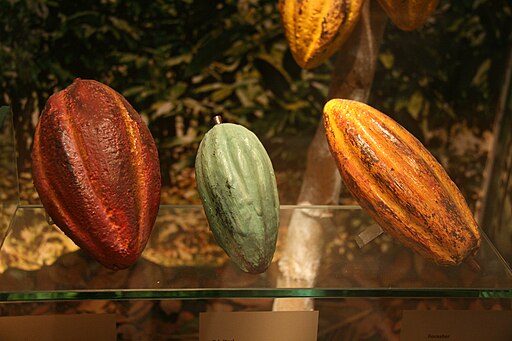
Cacao(Theobroma cacao) is a tropical fruit native to the Amazon, domesticated in Central America by the indigenous people of the region long before the arrival of the conquistadors.
The native peoples of Mesoamerica prepared hot and cold beverages by mixing cocoa with corn, achiote, chili or anise.
The genus Theobroma comprises more than 22 species, including other cocoa-like fruits, also native to the Amazon basin. These include copoazú (theobroma grandiflorum) and mocambo (theobroma bicolor).

Economist (Central University of Venezuela). Full professor and researcher attached to the “Edgar Abreu Olivo” Agrifood Research Center, Universidad de Los Andes. Doctor from the University of La Laguna (Spain). Award “One of the 10 most consulted authors of the Saber ULA university portal” (2005); prize in the III Essay Contest of the Central Bank of Venezuela BCvoz Economico, 2016, with the work “Theobroma cacao: transformation and consumption of the “food of the gods” in Venezuela and the world” (co-authored).
Description and characteristics of cocoa
Cocoa (Theobroma cacao L.) belonging to the family of SterculiaceaeIt grows in the humid and tropical regions of the Americas, Africa and Asia (cultivated mainly by small producers), in the belt between 10 degrees north and 10 degrees south of the equator (ICCO, 2020; FAO, 2020).

Therefore, the Amazon basin is an area that harbors genetic diversity and variability of Theobroma cacao; scattered populations of wild cacao, cultivated cacao and related species of this genus can be found there.
The fruit
The fruit of the cocoa tree is commonly called “mazorca”. It sprouts from the main trunk and the tops of the trees. Generally, the drupe is ellipsoidal in shape, about 15 to 25 long.

However, the number of grooves and shape of the pod will depend on the type of cocoa; the color of the ripe fruit can vary and be red, orange, purple or yellow.
Inside, a thick fiber extends from which “almonds” or cocoa beans, covered by mucilage which is a thick white edible layer with a sweet taste, are pressed.
Cocoa flowers

A plant that needs other plants…
Cocoa is also considered a conservationist crop because its production system generally includes forest or fruit species to provide permanent shade and mosses as temporary shade, thus becoming a protector of watersheds, flora and fauna of the ecosystem.
According to The Nature Conservancy, cited by Nicholson and Texeira (2018):
“In addition to being a means to avoid deforestation, cocoa plantations favor the local, regional and national economy…”
Buy cocoa products online!
Scroll horizontally to see other cocoa products: raw cocoa, fresh cocoa, cocoa butter and many more to buy online. Shipments from the United States and Spain.
Cocoa processing machines
For home or semi-industrial use
From small electrical devices for making chocolates at home to semi-industrial chocolate tempering machines, chocolate fountains and other related products.
Industrials
Through the following links you will be able to buy industrial machinery for cocoa processing. International shipments from China, Spain among others, to virtually anywhere in the world.
Origin of cocoa
Where did cocoa originate? In Central America or South America? How did it become chocolate as we know it today? How many species are there? In which regions of the world is it grown? Where is the most cocoa produced in the world? What are the benefits for humans? Find out the answers to all these questions from Dr. María Liliana Quintero, specialist in the subject.
The precise identification of the origin of cocoa in tropical America is controversial, due to the discussion about the genesis and dispersion of this crop.
According to Cartay (n/d), the primary center of origin is often confused with the center of domestication; the former refers to the geographical area where the largest number of wild species of the item is concentrated, while the latter refers to the place where it began to be used in its various uses (culinary, medicinal or even as a means of exchange).
Thesis #1 Origin in Central America
On the one hand, the north-south dispersion thesis postulates that cocoa originated in Central America and was brought to South America with the pre-Columbian indigenous migrations.
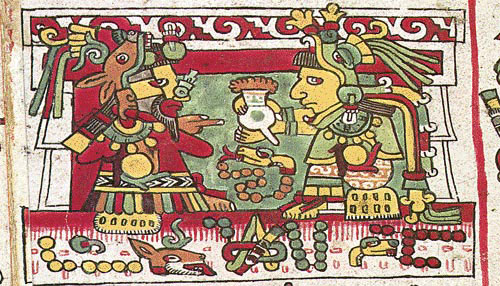
Sánchez and Jaffé (1992) state that there are several archaeological evidences of migrations from Alaska to South America; they also point out that Theobroma cacao L. was spread by the colonizers during the conquest and colonization processes in America.
Thesis #2 Amazonian origin
On the other hand, the thesis of south-north dispersion argues that the origin of cocoa is the AmazonThe species was first domesticated in the Orinoco region, including the Orinoco region, and from there it spread northward through dissemination by man, animals or the wind, and was later domesticated by ancient civilizations in Central America.

The precise origin of cocoa is further complicated by the fact that of the twenty-two known species, nineteen are found in South America; thirteen of them are represented in the Orinoco-Amazon region, of which ten are exclusive to this area (Cartay, 1999).
Brief history of cocoa
Cocoa consumption in Mesoamerica dates back to the pre-Hispanic period, and after the arrival of the Spaniards to the American continent, it was definitively consolidated in the 18th century as one of the most demanded products.
Initially, this “Indian drink” composed of cocoa and corn, with some other ingredients such as achiote, chili and anise, was prepared in cold or hot water, having a very different flavor from the one we know today (Quiroz, 2014).
Later, in 1528 Hernán Cortés took cocoa to Spain and gave it as a gift to King Carlos V, highlighting its invigorating properties.
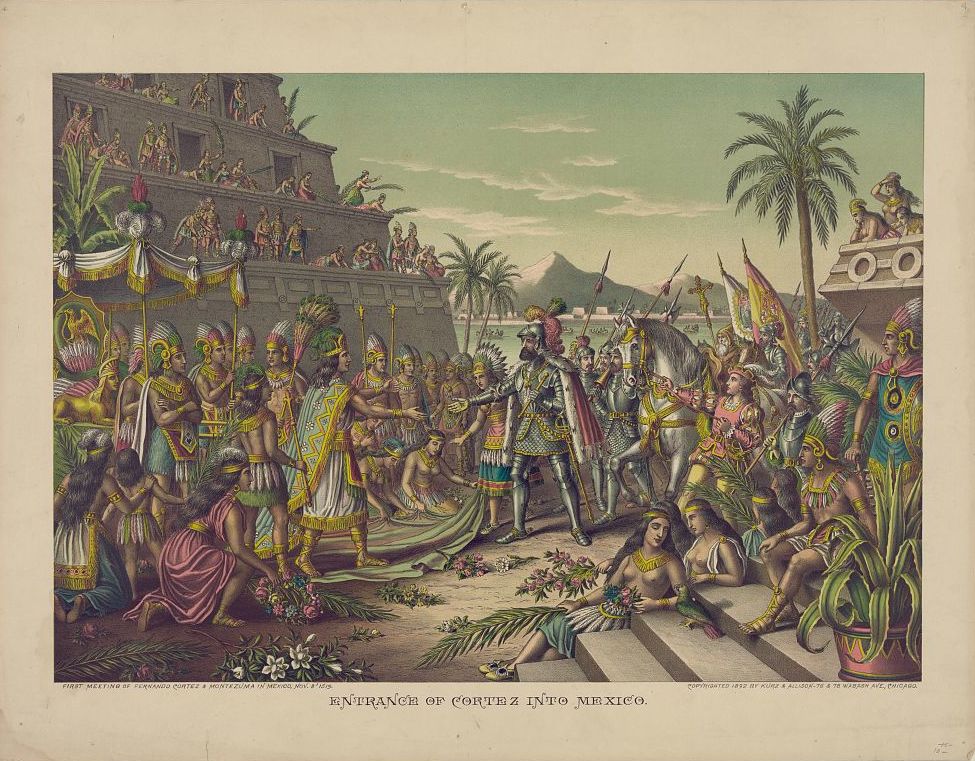
Christopher Columbus had already had contact with chocolate in 1502 during his fourth voyage to America, bringing both cocoa beans and the Aztec version of chocolate to the court, but it was not successful because of its bitter and pungent taste.
Later, sugar was added to chocolate, once sugarcane began to be brought from the Canary Islands and cultivated in Mexico; then other ingredients such as cinnamon and vanilla were added (Oliveras Sevilla, 2007).
Thus, at the beginning of the 17th century, the court, the Spanish aristocracy and the high clergy became fond of the very particular flavor of chocolate.
In which region of the world is it grown the most?
Cocoa was first cultivated exclusively in the Americas.
The major production centers during the colonial period were Soconusco (in the coastal region between Mexico and Guatemala), Guayaquil in Ecuador and the coastal regions of northern Venezuela.
Red: Theobroma cacao (Trinitarios)
Blue: Theobroma cacao (Criollos)
Green: Theobroma cacao (Forasteros)
Source: © Sémhur / Wikimedia Commons
At the end of the 19th century, in 1890, only 5% of the world’s cocoa production was grown in Africa, mainly on the islands of Equatorial Guinea.
At the beginning of the 20th century, cocoa production in the Americas accounted for 78% of world production. Subsequently, in the 1920s and 1930s, Africa achieved a better position in the world market for this commodity, accounting for 47% and 64%, respectively (Cartay, 1999).
More recently, in 2017 the Americas contributed about 15% to global production of this item, while Africa approximately 70%.
Therefore, we can confirm the preeminence of the African continent as a world producer at present, albeit of Forastero or ordinary cocoa of lower quality.
In addition, it is important to highlight that since the late 1990s, Asia became an important cocoa producing region in the world (FAO, 2020).
Genetic classification of cocoa
From the genetic point of view, cocoa can be subdivided into:
Criollo cocoa:
The plant is very susceptible to pests and diseases, with low yields. However, the high quality of its almonds stands out.
Consequently, this type of cocoa, which dominated the market until the middle of the eighteenth century, has been replaced by other more resistant varieties and has reduced the production of pure Criollos, currently representing about 5% of the world market.
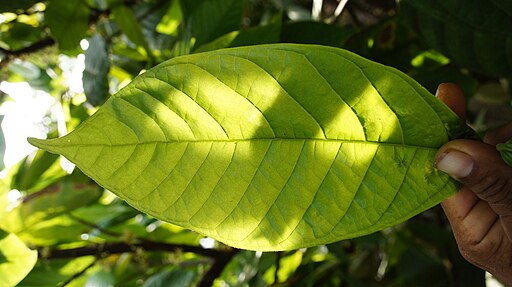
This cocoa is generally medium to large beans (80 to 90 beans per 100 grams), with a brownish-ivory to very light brown cotyledon, sweet cocoa flavor and a characteristic delicate aroma (United Nations Conference on Trade and Development, UNCTAD, 1991).
Examples of Criollo cocoa:
Some types cultivated in Ecuador, Venezuela, Samoa, Timor, Java and Sri Lanka. Because of its relative scarcity and its invaluable The quality of the product receives a price premium above the price quoted on the international stock exchange (UNCTAD, 1991).

Today, Criollo cocoa is not only used to refer to white or light-colored cocoa beans, but also to cocoa grown in cocoa-growing regions that have achieved fame due to the quality of their Criollo cocoa, even though they constitute diverse populations due to subsequent crosses with hybrids and Forasteros.
Thus, homozygous Criollo cocoas have recently been called “Old Criollos”, referring to the cocoas that were cultivated by the ancient settlers of America, while the so-called “Modern Criollos” correspond to hybrid Criollo cocoas (Motamayor, Risterucci, López, Ortiz, Moreno and Lanaud, 2002).
Cacao forastero:
It is characterized for being a plant more resistant to diseases than Criollo cocoa, and of medium to high production level. It generally produces small to medium kernels (approximately 90 to 110 kernels per 100 grams) and dark cotyledon.
It is the most produced type of cocoa in the world, representing approximately 95% of world production, mainly from West African countries (UNCTAD, 1991).
Populations of Forastero cocoa in wild and semi-wild spontaneous state, as well as cultivated, have been found in the Guianas, in the Orinoco and Amazon basins, from the upper basin that originates in the Andes and includes part of the territories of Colombia, Ecuador and Peru, to the lower basin in the Amazon region of Brazil (ICCO, 2020; Marcano, 2007).
The National cocoa of Ecuador is considered Forastero but presents some Criollo characteristics; since it is very susceptible to the Witches’ Broom disease(Crinipellis perniciosa); it has practically been replaced by hybrids that show greater tolerance to this disease (Marcano, 2007).
Trinitario Cocoa
is more resistant and productive than Criollo, but of inferior quality. It is the result of crossing Forastero and Criollo cocoa.

It produces medium to large grains (65 to 90 grains per 100 grams), with a cotyledon that is generally brown in color. It is produced in Grenada, Jamaica, Trinidad and Tobago and in many plantations in Colombia, Venezuela and Central America (UNCTAD, 1991).
The Trinitario cocoas are also called “modern Criollos” and constitute a heterogeneous group of genotypes that morphologically show mixed characters of both morphogeographic groups (Lanaud, Motamayor and Sounigo, 1999).
Commercial classification of cocoa
From a commercial point of view, cocoa can be classified into two categories on the world market (UNCTAD, 1991):
Ordinary cocoa:
Corresponds to the Forastero type. They are called “basic beans” in the United States and “bulk beans” in Europe and are used in the manufacture of cocoa butter and products with a high proportion of chocolate.
Fine or flavored cocoa:
Criollos and Trinitarios beans correspond to what is known in the world market as fine or aroma cocoa. They are known as “fines” in Europe and “flavor beans” in the United States.
They have distinctive aroma and flavor characteristics in fine chocolates and coatings and are generally used in blends with ordinary or foreign beans to produce specific odors and flavors in finished products.
Grain processing: fermenting, drying and roasting
Cocoa can be propagated sexually (by botanical seed) or asexually (by cutting or grafting) (Instituto Nacional Autónomo de Investigaciones Agropecuarias, 2009).

Source: Everjean from Antwerp, Belgium[CC BY].
The predominant technological pattern for cocoa production is characterized by a plantation system that uses traditional agronomic practices and rudimentary technology.
Cocoa processing or post-harvest handling mainly involves harvesting, fermentation and drying.
Once the cocoa beans are harvested, they are transferred to the fermentation place (in the case of those producers who carry out this process of great importance for the development of the aroma and flavor of chocolate).
The grains must be distributed inside the fermentation box (although some producers place them on the floor on polyethylene bags), and then covered to increase the temperature of the mixture and protect the grains.
The duration of the fermentation process will depend on the type of cocoa; in general, Criollo types require two to three days; three to five days for Trinitario cocoa; six to seven days for Forasteros.
In the corresponding time frame for each type of cocoa, the beans must be removed to ensure good quality (Diaz Siohl, 2010).
Once the beans are fermented, they are transferred to the drying patios and must be stirred constantly for approximately three days; then the cocoa is roasted, which accentuates the flavor and aroma characteristic of the chocolate (Díaz Siohl, 2010).
Uses of cocoa
Cocoa beans (fermented or not) that are produced and marketed are processed industrially or by hand to obtain by-products (cocoa paste, butter and powder) and final products (chocolates, chocolates, chocolates, chocolate drinks, coatings, among others) (see Figure 1).

The cocoa paste, mass or liquor is obtained from the grinding of the bean. When the cocoa is subjected to pressure (pressing), a solid part or cake is obtained, which is crushed and pulverized to produce cocoa powder, which is used to make chocolates, chocolates and other confectionery products.
In turn, pressing yields a liquid part, the fat, which is filtered and deodorized to become cocoa butter, which is used in the production of chocolate and other related confectionery, as well as in the pharmaceutical and cosmetics industries.

Other parts of the cocoa fruit can also be used, such as the cob, which is used as organic fertilizer or for animal feed.
Even the husk of the grain is used as an infusion. On the other hand, it highlights the possibility of developing potential from the mucilage or the fruit in general.
Finally, a distinction must be made between mass consumption and fine or select chocolate products.
In this last category, the quality of the cocoa (from fine or aromatic cocoa) and its origin, as well as other ingredients, the knowledge and innovation of the master chocolatier, the final art in the presentation of the product, and the high cocoa content (which translates into dark chocolate) are relevant.
All this generates differentiated attributes to the final product, which constitute an edge of its competitiveness in both domestic and international markets.
Health and beauty benefits of chocolate
Cocoa derivatives belong to the group of foods called Stimulants.
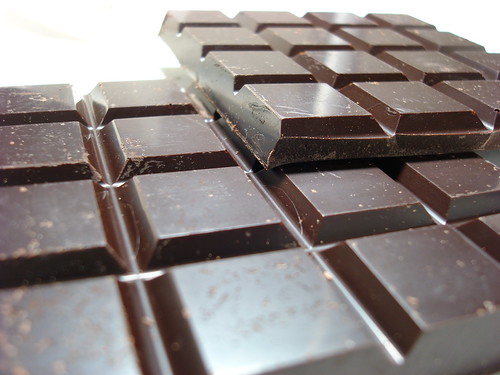
Chocolate, an emblematic by-product, is highly energetic, with a high fat and sugar content; it also contains minerals (potassium, phosphorus, magnesium, iron and zinc); flavonoids; biogenic amines; methylxanthines (caffeine and theobromine); cannabinoid fatty acids; vitamins A and B complex; among others (Bruinsma and Taren (1999); Valenzuela (2007); cited by Quintero, Anido and Azuaje, 2017).
Therefore, moderate consumption of chocolate -especially dark chocolate or chocolate with a high proportion of cocoa- has beneficial cardiovascular and other health protection effects .
Thus, for example, several scientific studies report its positive effects on the reduction of blood pressure and cholesterol, with improvements in the endolethal function of blood vessels(Koli, Köhler, Tonteri, Peltonen, Tikkanen and Fogelholm (2015), cited by Quintero, Anido and Azuaje, 2017).
It also induces favorable effects on people’s mood and combats depression; it also reduces the risk of Alzheimer’s disease (Nehlig (2012), cited by Quintero, Anido and Azuaje, 2017), among others.
On the other hand, they highlight the benefits of chocolate in cosmetology and hair and skin care, given its moisturizing and antioxidant effects, as well as its anti-inflammatory power.
Ecuadorian cocoa at a glance
Ecuador has been considered a leading producer of fine cocoa in the world.
However, by 2015 it is considered a partial producer-exporter, as 75% of its total cocoa exports corresponds to fine cocoa (ICCO, 2020).
Cocoa plantations in Ecuador began with the National variety, which for many years has been considered a type of Amazonian Forastero cocoa, from the eastern Andes, known in the world market as “Arriba” cocoa.
In 1890, a variety of Trinitario cocoa brought from Venezuela was introduced in the province of Los Ríos, which hybridized with the Nacional and resulted in the plantations of the Nacional and Trinitario complex; therefore, due to its particular quality, it is considered a fine cocoa.
However, some morphological, DNA and flavor studies show that the National cocoa maintains genetic distances from the Forasteros, Trinitarios and Criollos, requiring a separate classification.
Currently, it is evident that most of the material planted in Ecuador corresponds to a Nacional x Forastero genotype and to a lesser extent to Nacional x Trinitario, so that the pure Nacional genotype is increasingly scarce, representing only 5% of the total cocoa cultivated in the country (Quingaísa and Riveros, 2007).
References
- Cartay, R. 1999. Una aproximación al mercado mundial del cacao fino o de aroma. . Mérida: mimeographed.
- Cartay, R. (n/d). Chorote defense. Cuisine and Wine, retrieved from: http://www.cocinayvino.com.
- United Nations Conference on Trade and Development (UNCTAD). 1991. Fine or flavored cocoa. Study of world production and trade. Geneva: UNCTAD/GATT.
- Díaz Siohl, C. 2010. Birongo and its cocoa. Caracas: Fundación Empresas Polar.
- National Autonomous Institute of Agricultural Research. 2009. Cacao cultivation manual for the Ecuadorian Amazon. Manual no. 76. Quito: INIAP.
- International Cocoa Organization. 2020. Retrieved from: http://www.icco.org.
- Lanaud, C., Motamayor, J.C. and Sounigo, O. 1999. Cocoa. In J.C. Glaszman (Ed.), Genetic diversity of cultivated tropical plants, (pp. 125-151). Montpellier, France: CIRAD.
- Marcano, M. 2007. Genetic mapping of yield factors and morphological characters in a cultivated population of “modern” Criollo cacao (Theobroma cacao L.), by means of an association analysis. (Paper presented for the PhD degree). Universidad de Los Andes, Postgraduate in Fundamental Medical Sciences, Merida, Venezuela.
- Motamayor, J.C., Risterucci, A.M., López, P.A., Ortiz, C.F., Moreno, A. & Lanaud, C. 2002. Cacao domestication I: the origin of the cacao cultivated by the Mayas. Heredity, (89), pp. 380-386.
- Nicholson, Marcy and Texeira, Marcelo. April 13, 2018. “Approach-chocolate forests: can cocoa help save the Amazon?” Reuters Top News , retrieved from: http://www.lta.reuters, com.
- Oliveras Sevilla, J. M. 2007. Chocolate processing, a sweet and ecological technique. Técnica Industrial, (268), pp. 47-81. Retrieved from: http://www.tecnicaindustrial.es.
- Food and Agriculture Organization of the United Nations (FAO). 2020. FAOSTAT Database Results. Retrieved from: http://www.fao.org.
- Quingaísa, E. and Riveros, H. 2007. Case study: denomination of origin “cacao arriba”. Quito, Ecuador: FAO and IICA. Retrieved from http://www.fao.org.
- Quintero, M. L., Anido, J. and Azuaje, A. 2017. Cocoa consumption in Venezuela and the world from a sustainable perspective (1960-2014). Agroalimentaria, (45), pp. 23-49.
- Quiroz, Enriqueta. 2014. Circulation and consumption of cocoa in Mexico City in the eighteenth century. Secuencia, (88), January-April, pp. 37-64.
- Sánchez, P. and Jaffé, K. 1992. Pre-Columbian human migration routes to Amazonia suggested by the distribution of cacao. Interciencia, 17, (1), pp. 28-61.
Related Posts
January 22, 2020

3 scientific studies on ayahuasca
January 10, 2020
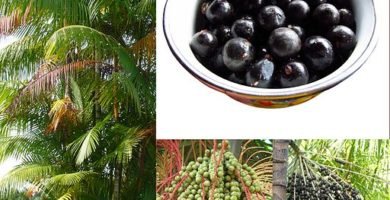
Acai, asai, asaí or açaí: a fruit that cures EVERYTHING!
December 21, 2019
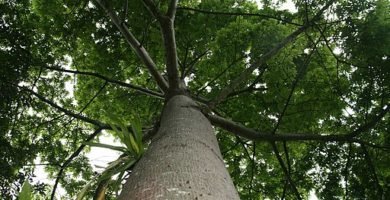
🥇 The Great Amazonian Legend
December 9, 2019

Dragon Fruit Benefits – The healthy power of Pitayas
November 25, 2019

Brazil Nut (Bertholletia excelsa)
October 28, 2019

7 medicinal fruits of the Amazon Rainforest
October 20, 2019
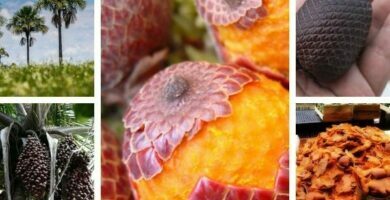
Mauritia Flexuosa: “The tree of life” (Buriti or Moriche palm)
October 5, 2019

Amazonian fruits – Jungle Fruits and Super Food
October 5, 2019
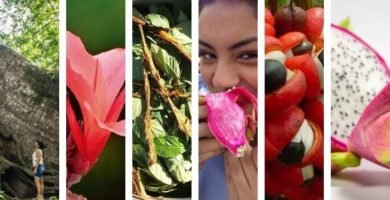
🥇 Amazon Rainforest Plants: 1001 species, names, photos and uses!
This post is also available in:
![]() Español (Spanish)
Español (Spanish)

